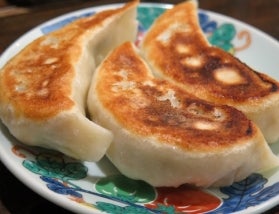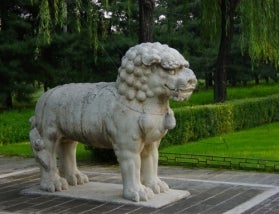Sarah Martin, Manager, Lending Services
Chinese New Year, also known as the Spring Festival, is one of the most important traditional holidays in China. January 28 is Chinese New Year’s Day for 2017 according to the Lunar Calendar. The celebration usually starts on New Year’s Eve, when families gather for an annual reunion dinner. At the event, people exchange gifts, pass along warm wishes and give “red envelopes” to children while enjoying lots of delicious food. The Spring Festival has always been my favourite Chinese traditional holiday as I get to meet with people that I haven’t seen for a year and hear about their exciting life updates. Below are some of the interesting facts about the Chinese New Year.
Traditional Food
Food served at the New Year Eve’s dinner may vary from region to region. One of the most common foods is dumplings (also called Jiaozi in Chinese). The shape of a dumpling looks like sycee (a type of silver or gold currency used in imperial China) and it is believed to represent fortune and wealth. Another food that is commonly seen at the dinner is fish. There is a Chinese proverb saying “may there be surpluses every year” and the pronunciation of fish resembles the pronunciation of surplus. Therefore, the whole sentence sounds like “may there be fish every year”. That’s why a fish dish is usually included at the dinner.

Fried Dumplings. The shape of a dumpling looks like sycee (a type of silver or gold currency used in imperial China).
The picture is under CC0 Public Domain - it is free for commercial use, and no attribution required. The image was retrieved from https://pixabay.com/en/dumplings-fried-japanese-food-1808400/.
Mythology
The origin of the Chinese New Year lies in the fight against Nian, a beast in Chinese mythology. Nian would destroy villages, attack people and eat children. People were so scared of Nian and went to hide from the beast. One day, there was an old man claiming that he would take revenge on Nian and make the beast disappear. The old man put up some red papers and set off firecrackers. From that day, Nian never showed up again. From then on, people came to believe that Nian was afraid of the color red and loud noises. Every year, when the New Year was about to come, people started to dress themselves in red, give children “red envelopes” and set off firecrackers. With time, this has become a tradition and it has been passed on to each generation.

Northern style of Nian of the Ming dynasty. The origin of the Chinese New Year lies in the fight against Nian.
By the original uploader was Leonard G. at English Wikipedia - Transferred from en.wikipedia to Commons by Common Good using CommonsHelper., CC SA 1.0, https://commons.wikimedia.org/w/index.php?curid=6084929
Greetings
On New Year’s Day, people greet each other with loud and enthusiastic wishes. Below are the two most common greetings.
- 新年快乐 (pronounced as Xin Nian Kuai Le): Happy New Year
- 恭喜发财 (pronounced as Gong Xi Fa Cai): Congratulations and be prosperous

“Happy New Year” in Simplified Chinese characters (left) and in Traditional Chinese characters (right).
Greetings from the Library
Yi-Mei:
吉祥如意: Wishing you good fortune and may all your wishes come true.
大吉大利: Hope you have great luck and great prosperity.
Eva:
2017 is the year of Rooster! People who were born in the year of the Rooster are believed to be trustworthy, responsible and time sensitive. May the Rooster bring all of you luck and a happy new year in 2017!
Loc:
A new year has arrived. I want to wish everyone a happy new year. Special greetings to those born in the year of the Rooster. I hope everyone enjoys great health and happiness in the new year and 2017 brings luck and success!
References
Wikipedia. Chinese New Year. Retrieved from https://en.wikipedia.org/wiki/Chinese_New_Year




